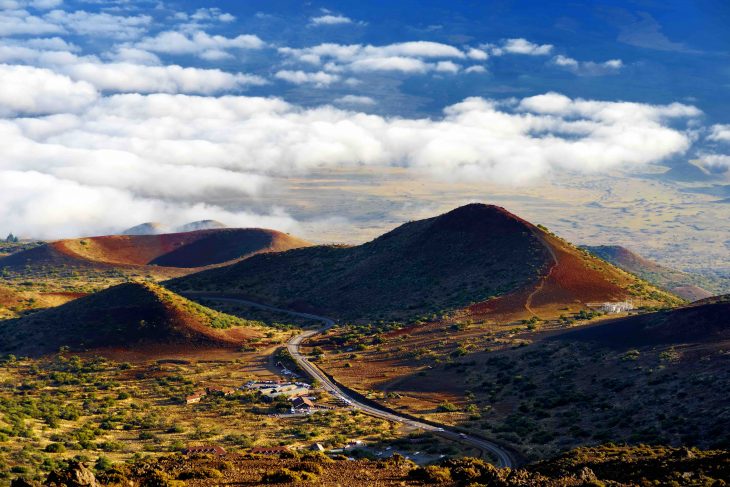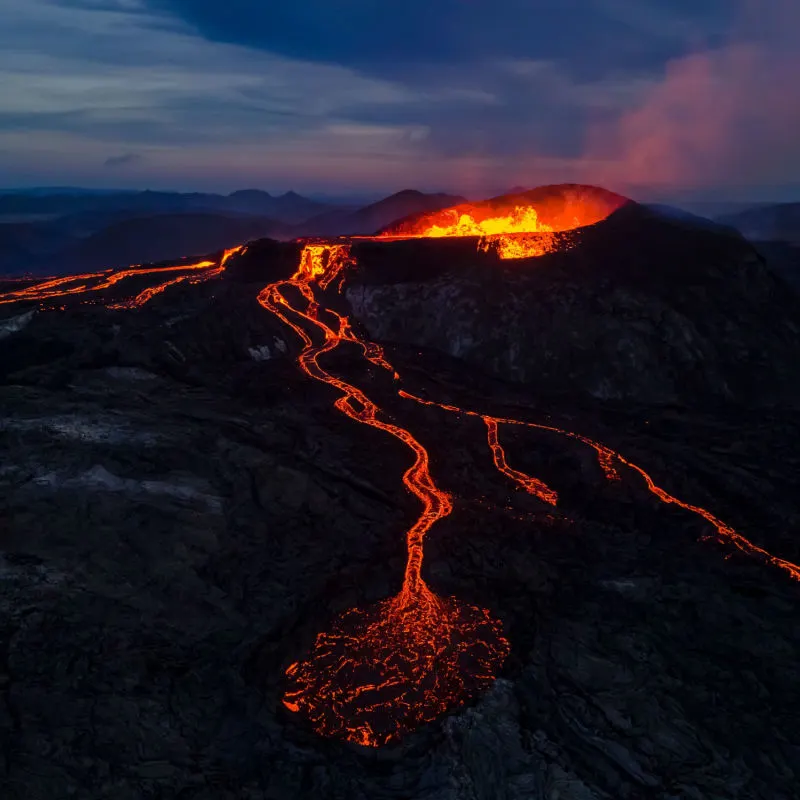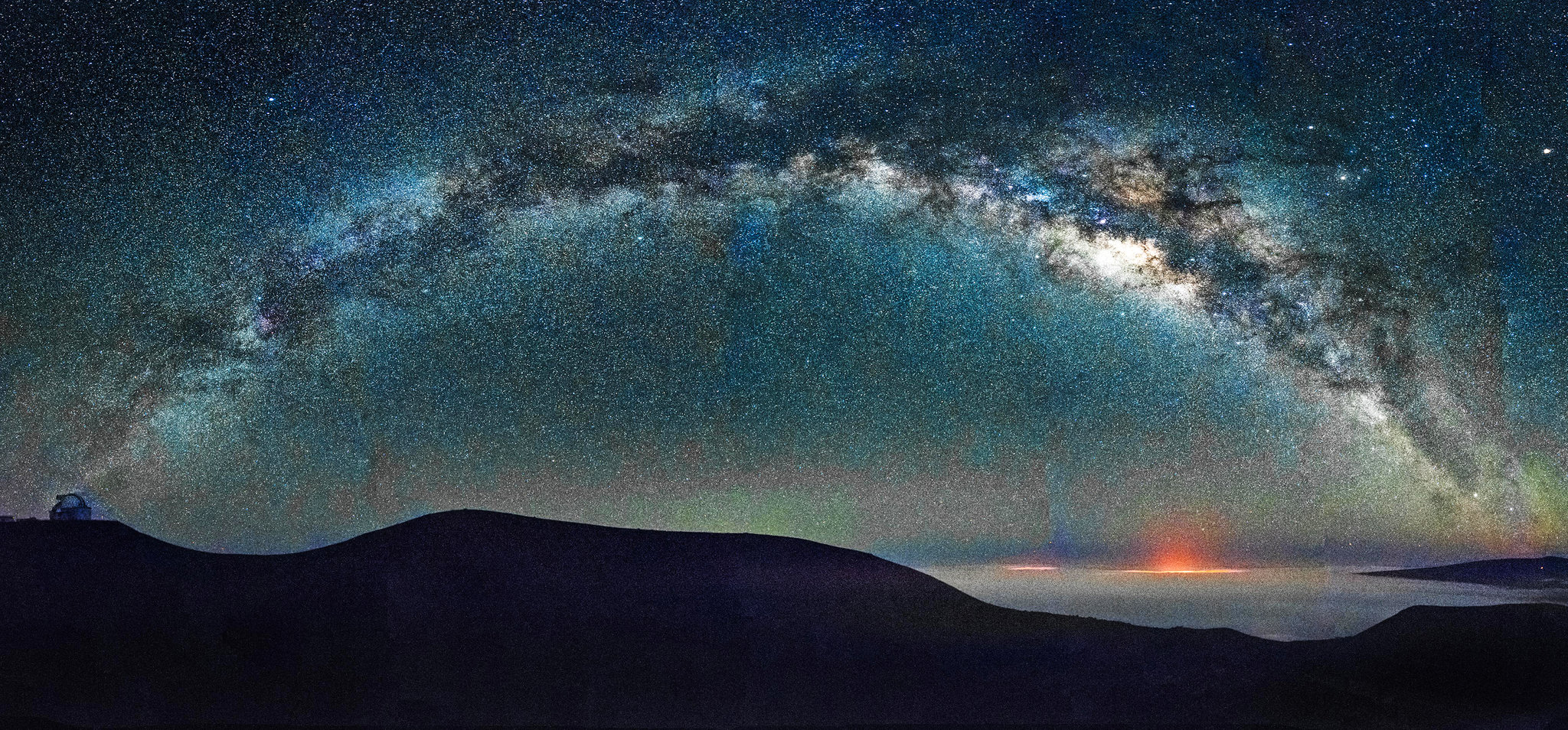
Rising majestically on the Big Island of Hawaii, Mauna Loa stands as one of the world’s most impressive and active volcanoes. With its towering presence and fascinating geological history, this iconic natural landmark captivates the imagination of visitors and scientists alike. Join us on a journey to uncover 18 exciting facts about Mauna Loa, delving into its volcanic might, environmental significance, and unique characteristics.
Impressive Size
Mauna Loa is the largest volcano on Earth in terms of volume and area covered. It stretches over 5,271 square kilometers (2,035 square miles) and has a volume estimated at approximately 75,000 cubic kilometers (18,000 cubic miles). Its sheer size contributes to its awe-inspiring presence.
Magnificent Elevation
Rising to an impressive height of 4,169 meters (13,678 feet) above sea level, Mauna Loa dominates the skyline of the Hawaiian Islands. When measured from its base below sea level, it reaches a staggering height of about 9,144 meters (30,000 feet), making it one of the tallest mountains in the world.
Active Volcanic Status
Mauna Loa is an active shield volcano, characterized by its gentle, sloping profile. It has erupted 33 times since its first well-documented eruption in 1843, with the most recent eruption occurring in 1984. Continuous monitoring and research help scientists understand its volcanic behavior.
Lava Flows

The volcanic activity of Mauna Loa has produced extensive lava flows that have shaped the landscape over time. These lava flows have been known to travel long distances, even reaching the coastline, leaving behind a dramatic testament to the volcano’s power and influence.
Environmental Diversity
Mauna Loa is home to a remarkable range of ecosystems and microclimates. From barren volcanic landscapes to lush rainforests, the mountain harbors diverse habitats that support a variety of plant and animal species, including endemic and rare flora and fauna.
Monitoring Observatory
The Mauna Loa Observatory, located near the summit, is an important scientific research facility. It is renowned for monitoring atmospheric conditions, including carbon dioxide levels, which have played a significant role in climate change studies and global environmental research.
Hiking Adventures
Hiking enthusiasts can embark on unforgettable journeys to explore the trails of Mauna Loa. The challenging hike to the summit traverses varied terrain, offering breathtaking views and an immersive experience of the volcano’s rugged beauty. Proper preparation and guidance are essential for safety.
Cultural and Sacred Significance
Mauna Loa holds great cultural and spiritual significance to the Hawaiian people. It is considered a sacred place and has been woven into the fabric of Hawaiian traditions, folklore, and ancestral beliefs. The volcano is deeply respected and revered by the local communities.
Diverse Flora
Despite its volcanic nature, Mauna Loa supports a surprising array of plant life. From hardy shrubs and grasses on the lower slopes to endemic species found in higher elevations, the volcano’s diverse flora showcases the resilience and adaptability of nature.
Geological Hotspot
Mauna Loa is part of the Hawaiian-Emperor seamount chain, a series of volcanic mountains formed by the movement of the Pacific tectonic plate over a hotspot in the Earth’s mantle. Its connection to this geological hotspot has contributed to the formation of the Hawaiian Islands over millions of years.
Lunar Landings Practice
Due to its unique geological characteristics, Mauna Loa’s rugged lava fields have served as a training ground for NASA astronauts. The barren landscapes and challenging terrains provide an ideal simulation for lunar missions, making it a sought-after location for space exploration training.
Volcanic Hazards
The volcanic activity of Mauna Loa poses potential hazards to nearby communities. Eruptions can release lava flows, volcanic gases, and ash clouds. Continuous monitoring and preparedness measures are in place to ensure the safety and well-being of the local population.
World Records
Mauna Loa holds several world records. It boasts the largest annual increase of carbon dioxide concentration, making it a key site for climate change research. Additionally, its volume and height contribute to records for the world’s largest volcano and the tallest mountain when measured from its base.
Future Eruptions
While the current volcanic activity of Mauna Loa is dormant, scientists closely monitor the volcano for any signs of reawakening. It is considered one of the most hazardous volcanoes in the world due to its potential for future eruptions.
Geological Exploration
Mauna Loa has fascinated geologists and researchers for centuries. Its unique geological features, such as lava tubes and cinder cones, provide valuable insights into volcanic processes and the formation of landforms.
Dark Sky Reserve

The summit area of Mauna Loa, away from light pollution, offers exceptional stargazing opportunities. It is recognized as a Dark Sky Reserve, allowing visitors to marvel at the celestial wonders above and appreciate the beauty of the night sky.
Wildlife Haven
Mauna Loa’s diverse ecosystems support a variety of wildlife, including native birds, insects, and small mammals. Some endangered and rare species, such as the Hawaiian petrel and the Hawaiian bat, find refuge in the volcano’s protected habitats.
Geological Timeframe
Mauna Loa’s formation and growth span a significant portion of Earth’s history. The volcano began forming about 600,000 years ago and has undergone periods of explosive and effusive eruptions, contributing to the shaping of the Hawaiian landscape.
Conclusion
Explore the wonder and power of Mauna Loa, a volcanic giant that has shaped the landscape and culture of Hawaii. From its massive size and environmental diversity to its scientific significance and cultural importance, Mauna Loa captivates the imagination and invites you to discover its intriguing facts. Whether you hike its trails, gaze at its starry skies, or appreciate its unique beauty from afar, this mighty volcano promises an unforgettable experience for all who encounter it.
Frequently Asked Questions (FAQs)
Can you hike to the summit of Mauna Loa?
Yes, it is possible to hike to the summit of Mauna Loa, but it requires careful planning, preparation, and a permit. The hike is challenging and can take multiple days. It is advised to consult with local authorities and experienced guides for safety and guidance.
Are there guided tours available to explore Mauna Loa?
Yes, there are guided tours and excursions available that offer a safe and informative way to explore Mauna Loa. These tours provide insights into the volcano’s geology, ecology, and cultural significance while ensuring visitor safety.
Is it safe to visit Mauna Loa during volcanic activity?
During periods of volcanic activity, safety precautions, and advisories are in place. It is essential to follow the guidance of local authorities, respect restricted areas, and stay informed about volcanic hazards and conditions before planning a visit.
Can you see active lava flows on Mauna Loa?
Active lava flows on Mauna Loa are relatively rare, as the volcano’s recent eruptions have been mostly effusive with slow-moving lava. However, there have been instances where lava flows have reached the coastline. It’s important to stay updated on the volcano’s activity and consult with local authorities for the latest information.
Are there visitor centers or museums dedicated to Mauna Loa?
Yes, there are visitor centers and museums on the Big Island of Hawaii that provide information about Mauna Loa and the island’s volcanic history. These centers offer educational exhibits, interpretive displays, and knowledgeable staff who can enrich your understanding of the volcano and its significance.
Was this page helpful?
Our commitment to delivering trustworthy and engaging content is at the heart of what we do. Each fact on our site is contributed by real users like you, bringing a wealth of diverse insights and information. To ensure the highest standards of accuracy and reliability, our dedicated editors meticulously review each submission. This process guarantees that the facts we share are not only fascinating but also credible. Trust in our commitment to quality and authenticity as you explore and learn with us.
